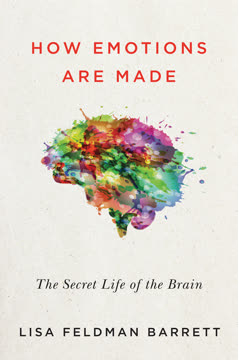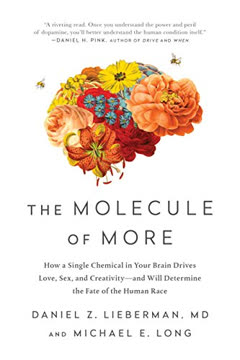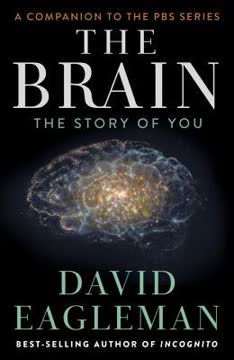मुख्य निष्कर्ष
1. मस्तिष्क की लचीलापन अनुकूलन की क्षमता और हमारी पहचान को आकार देती है
आपके जीवन के सभी अनुभव – एकल बातचीत से लेकर आपकी व्यापक संस्कृति तक – आपके मस्तिष्क के सूक्ष्म विवरणों को आकार देते हैं।
न्यूरोप्लास्टिसिटी महत्वपूर्ण है। मानव मस्तिष्क की अपनी संरचना को फिर से जोड़ने की क्षमता हमें विभिन्न वातावरणों में अनुकूलित करने और अपने जीवन भर सीखने की अनुमति देती है। यह लचीलापन बचपन में सबसे अधिक स्पष्ट होता है, जहां मस्तिष्क अनुभवों के आधार पर संबंधों को बनाता और छांटता है। हालाँकि, यह वयस्कता में भी जारी रहता है, हालांकि धीमी गति से।
अनुभव हमें आकार देते हैं। हर बातचीत, आकस्मिक संवाद से लेकर सांस्कृतिक समावेश तक, हमारे मस्तिष्क की संरचना को शारीरिक रूप से बदल देती है। यह निरंतर पुनःआकार देने का अर्थ है कि हमारी पहचान स्थिर नहीं है, बल्कि जैसे-जैसे हम अनुभवों को संचित करते हैं, यह विकसित होती है। मस्तिष्क की अनुकूलनशीलता चरम मामलों में प्रदर्शित होती है, जैसे कि कैमरन मॉट, जिसने अपने मस्तिष्क का आधा हिस्सा हटाने के बाद सामान्य रूप से कार्य किया।
न्यूरोप्लास्टिसिटी के प्रमुख पहलू:
- छंटाई: मस्तिष्क अप्रयुक्त संबंधों को समाप्त करता है
- सुदृढ़ीकरण: बार-बार उपयोग किए जाने वाले संबंध मजबूत होते हैं
- अनुकूलन: आवश्यकता पड़ने पर मस्तिष्क विभिन्न क्षेत्रों को कार्य सौंप सकता है
2. हमारी वास्तविकता की धारणा एक निर्मित भ्रांति है
आपका मस्तिष्क नहीं जानता और न ही उसे परवाह है कि उसे डेटा कहाँ से मिलता है। जो भी जानकारी आती है, मस्तिष्क यह तय करता है कि इसके साथ क्या करना है।
वास्तविकता व्यक्तिपरक है। जो हम वास्तविकता के रूप में अनुभव करते हैं, वह वास्तव में हमारे मस्तिष्क द्वारा निर्मित एक सावधानीपूर्वक मॉडल है। यह मॉडल सीमित संवेदी इनपुट और उस इनपुट की हमारे मस्तिष्क की व्याख्या पर आधारित है। हमारी इंद्रियाँ दुनिया की एक सीधी खिड़की प्रदान नहीं करतीं, बल्कि एक अत्यधिक संसाधित प्रतिनिधित्व करती हैं।
संवेदी प्रतिस्थापन लचीलापन प्रदर्शित करता है। प्रयोगों से पता चलता है कि मस्तिष्क असामान्य चैनलों के माध्यम से जानकारी प्राप्त करने के लिए अनुकूलित हो सकता है। उदाहरण के लिए, अंधे लोग संवेदी प्रतिस्थापन उपकरणों का उपयोग करके अपनी जीभ या पीठ के माध्यम से "देख" सकते हैं। यह दर्शाता है कि हमारी वास्तविकता की धारणा स्थिर नहीं है, बल्कि इसे बदला और विस्तारित किया जा सकता है।
निर्मित वास्तविकता के उदाहरण:
- रंग बाहरी दुनिया में मौजूद नहीं है, केवल हमारी धारणा में है
- उच्च तनाव की स्थितियों में समय की धारणा विकृत हो सकती है
- ऑप्टिकल भ्रांतियाँ मस्तिष्क के अस्पष्ट जानकारी को समझने के प्रयासों को प्रकट करती हैं
3. अवचेतन प्रक्रियाएँ निर्णय लेने और व्यवहार पर हावी होती हैं
हम उन निर्णयों के बारे में जागरूक नहीं हैं जो हमारे लिए किए जा रहे हैं।
अवचेतन मन का राज। हमारे अधिकांश निर्णय और क्रियाएँ मस्तिष्क में अवचेतन प्रक्रियाओं द्वारा संचालित होती हैं। ये प्रक्रियाएँ हमारी जागरूकता के नीचे काम करती हैं, हमारे व्यवहार, विश्वासों और विकल्पों को बिना हमारी सचेत भागीदारी के आकार देती हैं। यह स्वतंत्र इच्छा और हमारे कार्यों पर सचेत नियंत्रण के विचार को चुनौती देता है।
ऑटोपायलट और विशेषज्ञता। कई जटिल कार्य, एक बार सीखे जाने पर, स्वचालित हो जाते हैं और इसके लिए कम सचेत प्रयास की आवश्यकता होती है। यह संज्ञानात्मक संसाधनों को मुक्त करता है, लेकिन यह भी उन क्रियाओं की ओर ले जा सकता है जिनका हमें पता नहीं होता। किसी कौशल में विशेषज्ञता अक्सर कम सचेत विचार की आवश्यकता होती है, जैसा कि एक नौसिखिए और एक विशेषज्ञ के बीच समान कार्य करते समय मस्तिष्क की गतिविधि में अंतर से प्रदर्शित होता है।
अवचेतन निर्णय लेने पर प्रभाव:
- प्राइमिंग: सूक्ष्म पर्यावरणीय संकेत हमारे विकल्पों को प्रभावित करते हैं
- भावनाएँ: आंतरिक भावनाएँ कई निर्णयों को मार्गदर्शित करती हैं
- पिछले अनुभव: संग्रहीत स्मृतियाँ हमारी प्रतिक्रियाओं को आकार देती हैं
- पूर्वाग्रह: अवचेतन पूर्वाग्रह हमारे निर्णयों को प्रभावित करते हैं
4. सामाजिक इंटरैक्शन मस्तिष्क के कार्य और मानव अस्तित्व के लिए महत्वपूर्ण है
सामान्य मस्तिष्क कार्य हमारे चारों ओर के सामाजिक जाल पर निर्भर करता है। हमारे न्यूरॉन्स को पनपने और जीवित रहने के लिए दूसरों के न्यूरॉन्स की आवश्यकता होती है।
मनुष्य स्वाभाविक रूप से सामाजिक होते हैं। हमारे मस्तिष्क सामाजिक इंटरैक्शन के लिए तैयार हैं, जिसमें दूसरों को समझने और उनसे जुड़ने के लिए विशिष्ट न्यूरल सर्किट हैं। यह सामाजिक स्वभाव मानव अस्तित्व और जटिल समाजों के विकास के लिए महत्वपूर्ण रहा है।
अवसाद मस्तिष्क को नुकसान पहुँचाता है। सामाजिक इंटरैक्शन की कमी गंभीर मनोवैज्ञानिक तनाव और संज्ञानात्मक गिरावट का कारण बन सकती है। सामाजिक अस्वीकृति का दर्द शारीरिक दर्द के समान मस्तिष्क के क्षेत्रों को सक्रिय करता है, जो हमारे कल्याण के लिए सामाजिक बंधनों के महत्व को रेखांकित करता है।
सामाजिक न्यूरोसाइंस के प्रमुख पहलू:
- मिरर न्यूरॉन्स: हमें दूसरों के कार्यों को समझने और सहानुभूति करने में मदद करते हैं
- मन का सिद्धांत: हमें दूसरों को मानसिक अवस्थाएँ सौंपने की अनुमति देता है
- सामाजिक दर्द: अस्वीकृति दर्द-संवेदनशील मस्तिष्क क्षेत्रों को सक्रिय करती है
- समूह गतिशीलता: इन-ग्रुप और आउट-ग्रुप बनाने की प्रवृत्ति
5. प्रौद्योगिकी और न्यूरोसाइंस मानव क्षमताओं को बढ़ाने के लिए एकत्रित हो रहे हैं
हम अब एक प्राकृतिक प्रजाति नहीं हैं जिसे विकासात्मक समय सीमा पर संवेदी अनुकूलन की प्रतीक्षा करनी होती है। जैसे-जैसे हम भविष्य की ओर बढ़ते हैं, हम अपने संवेदी पोर्टल को दुनिया में डिज़ाइन करने में अधिक सक्षम होंगे।
मानव इंद्रियों का संवर्धन। न्यूरोसाइंस और प्रौद्योगिकी में प्रगति हमें प्राकृतिक सीमाओं से परे अपने संवेदी अनुभवों का विस्तार करने में सक्षम बना रही है। बधिरों के लिए कोक्लियर इम्प्लांट से लेकर प्रयोगात्मक उपकरणों तक जो हमें डेटा "महसूस" करने की अनुमति देते हैं, हम डिज़ाइन किए गए संवेदी अनुभवों के युग में प्रवेश कर रहे हैं।
मस्तिष्क-यंत्र इंटरफेस। प्रौद्योगिकी जो मस्तिष्क और बाहरी उपकरणों के बीच सीधे संचार की अनुमति देती है, तेजी से प्रगति कर रही है। यह विचारों के माध्यम से कृत्रिम अंगों को नियंत्रित करने या यहां तक कि हमारे शारीरिक क्षमताओं को मानव शरीर से परे बढ़ाने की संभावनाएँ खोलता है।
मानव संवर्धन के उदाहरण:
- अंधों के लिए संवेदी प्रतिस्थापन उपकरण
- अम्प्यूटीज़ के लिए मस्तिष्क-नियंत्रित कृत्रिम अंग
- डेटा धाराओं को "महसूस" करने के लिए प्रयोगात्मक उपकरण
- स्मृति और संज्ञानन के संभावित भविष्य के संवर्धन
6. चेतना जटिल न्यूरल इंटरैक्शन से उभरती है
जहाँ भी आप देखते हैं, आप उभरती विशेषताओं वाले सिस्टम पा सकते हैं। एक विमान पर कोई भी धातु का टुकड़ा उड़ान की विशेषता नहीं रखता, लेकिन जब आप टुकड़ों को सही तरीके से व्यवस्थित करते हैं, तो उड़ान उभरती है।
उद्भव चेतना को समझाता है। चेतना संभवतः मस्तिष्क में अरबों न्यूरॉन्स के जटिल इंटरैक्शन से उत्पन्न होने वाली एक उभरती विशेषता है। जैसे एक चींटी का समूह सरल व्यक्तिगत क्रियाओं के माध्यम से जटिल व्यवहार प्रदर्शित करता है, चेतना सरल न्यूरल इकाइयों की सामूहिक गतिविधि से उभरती है।
एकीकरण और विभेदन। सिद्धांतों का सुझाव है कि चेतना के लिए एकीकरण (मस्तिष्क क्षेत्रों के बीच व्यापक संचार) और विभेदन (विशिष्ट अवस्थाओं का प्रतिनिधित्व करने की क्षमता) के बीच संतुलन आवश्यक है। यह संतुलन चेतना के समृद्ध, एकीकृत अनुभव की अनुमति देता है।
चेतना अनुसंधान में प्रमुख अवधारणाएँ:
- चेतना के न्यूरल सहसंबंध
- एकीकृत सूचना सिद्धांत
- वैश्विक कार्यक्षेत्र सिद्धांत
- चेतना की कठिन समस्या
7. भविष्य में डिजिटल अमरता और गैर-जीवित अस्तित्व शामिल हो सकते हैं
हम मानव इतिहास के एक क्षण में हैं जब हमारी जीवविज्ञान और प्रौद्योगिकी का विवाह मस्तिष्क की सीमाओं को पार कर जाएगा।
चेतना को अपलोड करना। भविष्य की प्रौद्योगिकियाँ हमें अपनी चेतना को गैर-जीवित आधारों पर स्थानांतरित करने की अनुमति दे सकती हैं, जो संभावित रूप से डिजिटल अमरता की ओर ले जा सकती हैं। यह हमारे जीवन, मृत्यु और मानव अस्तित्व की धारणा को मौलिक रूप से बदल सकता है।
अनुकरणीय वास्तविकताएँ। यदि चेतना को अपलोड किया जा सकता है, तो यह अनुकरणीय दुनियाओं में रहने या यहां तक कि हमारे डिजिटल स्वरूपों को दूर के ग्रहों पर भेजकर ब्रह्मांड का अन्वेषण करने की संभावनाएँ खोलता है। यह वास्तविकता की प्रकृति और हमारे स्थान के बारे में दार्शनिक प्रश्न उठाता है।
डिजिटल अस्तित्व के निहितार्थ:
- संभावित रूप से अत्यधिक विस्तारित जीवनकाल
- कई वास्तविकताओं का अनुभव करने की क्षमता
- नकल की गई चेतना के नैतिक विचार
- संभावना कि हम पहले से ही एक अनुकरण में जी रहे हैं
अंतिम अपडेट:
FAQ
What's "The Brain: The Story of You" about?
- Exploration of the Brain: The book delves into the complexities of the human brain, exploring how it shapes our identity, perceptions, and interactions with the world.
- Understanding Human Experience: It examines how our brains create our reality, influence our decisions, and drive our social behaviors.
- Neuroscience for Everyone: David Eagleman presents neuroscience in an accessible way, aiming to bridge the gap between academic research and everyday life.
- Future of Humanity: The book also speculates on the future of human evolution and the potential for merging biology with technology.
Why should I read "The Brain: The Story of You"?
- Insightful Content: It provides a deep understanding of how the brain functions and its impact on our lives.
- Accessible Science: The book is written in a way that makes complex scientific concepts understandable to non-experts.
- Relevance to Daily Life: It connects neuroscience to everyday experiences, helping readers understand themselves and others better.
- Futuristic Perspective: Offers a thought-provoking look at the future of human evolution and technology.
What are the key takeaways of "The Brain: The Story of You"?
- Brain Plasticity: The brain's ability to adapt and change throughout life is a central theme, highlighting its role in learning and recovery.
- Social Nature of Humans: The book emphasizes the importance of social interactions and how they shape our brain and behavior.
- Reality Construction: It explores how our brains construct our perception of reality, often leading to illusions and misconceptions.
- Future Possibilities: Eagleman discusses the potential for technological advancements to enhance human capabilities and alter our understanding of identity.
How does David Eagleman explain brain plasticity in the book?
- Adaptability: Eagleman describes the brain as a "livewired" organ, constantly reshaping itself in response to experiences and environments.
- Childhood Development: He explains how the brain's wiring is particularly flexible during childhood, allowing for rapid learning and adaptation.
- Adult Plasticity: While less pronounced than in children, adult brains also exhibit plasticity, enabling learning and recovery from injuries.
- Implications for the Future: The concept of plasticity suggests potential for future enhancements through technology and new sensory experiences.
What is the significance of social interactions according to "The Brain: The Story of You"?
- Essential for Survival: Social interactions are crucial for normal brain function and human survival, as emphasized by Eagleman.
- Empathy and Understanding: The book explores how our brains are wired to empathize and understand others, which is vital for social cohesion.
- Impact of Isolation: Eagleman discusses the detrimental effects of social isolation on mental health, highlighting the brain's need for social connections.
- Group Dynamics: The book examines how group behavior and social structures influence individual brain function and decision-making.
How does "The Brain: The Story of You" address the concept of reality?
- Constructed Perception: Eagleman explains that our perception of reality is a construction of the brain, influenced by sensory inputs and past experiences.
- Illusions and Misconceptions: The book discusses how the brain can be tricked by illusions, revealing the subjective nature of reality.
- Role of Expectations: Our expectations and prior knowledge shape how we perceive the world, often leading to biases and errors.
- Implications for Understanding: Understanding the brain's role in constructing reality can help us better navigate our perceptions and interactions.
What does David Eagleman say about decision-making in the book?
- Complex Process: Decision-making is portrayed as a complex interplay of competing neural networks, each with its own goals and desires.
- Role of Emotions: Emotions play a crucial role in decision-making, providing quick summaries of situations to guide choices.
- Influence of the Unconscious: Many decisions are influenced by unconscious processes, highlighting the brain's hidden operations.
- Improving Decisions: Eagleman suggests that understanding these processes can lead to better decision-making strategies and societal policies.
How does "The Brain: The Story of You" explore the future of human evolution?
- Technological Integration: Eagleman speculates on the integration of technology with biology, potentially enhancing human capabilities.
- Sensory Augmentation: The book discusses the possibility of adding new senses to the human experience through technological advancements.
- Extended Lifespan: Eagleman explores the potential for extending human life and consciousness through scientific innovations.
- Ethical Considerations: The book raises questions about the ethical implications of altering human biology and identity.
What are the best quotes from "The Brain: The Story of You" and what do they mean?
- "Our brains are like snowflakes": This quote emphasizes the uniqueness of each individual's brain, shaped by personal experiences and environments.
- "We are works in progress": Eagleman highlights the ongoing nature of brain development and identity formation throughout life.
- "The brain is a relentless shape-shifter": This reflects the concept of brain plasticity, illustrating its ability to adapt and change.
- "We need each other": A reminder of the fundamental social nature of humans and the importance of social connections for brain health.
How does David Eagleman address the mind-body problem in the book?
- Neuroscientific Perspective: Eagleman explores the relationship between mental experiences and physical brain activity, challenging traditional dualism.
- Consciousness and Brain Activity: He discusses how consciousness emerges from complex neural interactions, rather than being separate from the brain.
- Impact of Brain Changes: The book examines how changes in brain structure or chemistry can alter personality and behavior, supporting a monistic view.
- Ongoing Mystery: While providing insights, Eagleman acknowledges that the mind-body problem remains one of neuroscience's greatest challenges.
What methods does "The Brain: The Story of You" suggest for enhancing brain function?
- Lifelong Learning: Eagleman advocates for continuous learning and mental challenges to promote brain health and plasticity.
- Social Engagement: Maintaining strong social connections is emphasized as crucial for cognitive function and emotional well-being.
- Physical Activity: Regular exercise is highlighted as beneficial for brain health, supporting memory and cognitive abilities.
- Technological Aids: The book explores the potential of technology to augment sensory experiences and cognitive capabilities.
How does "The Brain: The Story of You" relate to current neuroscience research?
- Cutting-Edge Insights: The book incorporates the latest findings in neuroscience, providing a contemporary understanding of brain function.
- Bridging Science and Life: Eagleman connects scientific research to everyday experiences, making complex concepts relatable and applicable.
- Future Directions: The book discusses emerging areas of research, such as brain-machine interfaces and sensory augmentation.
- Interdisciplinary Approach: Eagleman draws on insights from psychology, biology, and technology to present a holistic view of the brain.
समीक्षाएं
दिमाग: आपका कहानी को न्यूरोसाइंस के सुलभ परिचय के लिए ज्यादातर सकारात्मक समीक्षाएँ मिलती हैं। पाठक ईगलमैन की आकर्षक लेखन शैली और दिलचस्प उदाहरणों की सराहना करते हैं। यह पुस्तक चेतना, निर्णय लेने की प्रक्रिया, और सामाजिक व्यवहार जैसे विषयों को कवर करती है। कुछ पाठकों को लगता है कि यह उन लोगों के लिए गहराई की कमी रखती है जो पहले से न्यूरोसाइंस से परिचित हैं। आलोचक दोहराए गए वाक्यांशों और जटिल अवधारणाओं के अत्यधिक सरलीकरण की ओर इशारा करते हैं। कुल मिलाकर, यह सामान्य पाठकों के लिए मस्तिष्क विज्ञान पर एक मनोरंजक परिचय के रूप में अनुशंसित है, हालांकि जो लोग अधिक उन्नत सामग्री की तलाश में हैं, वे निराश हो सकते हैं।
Similar Books













